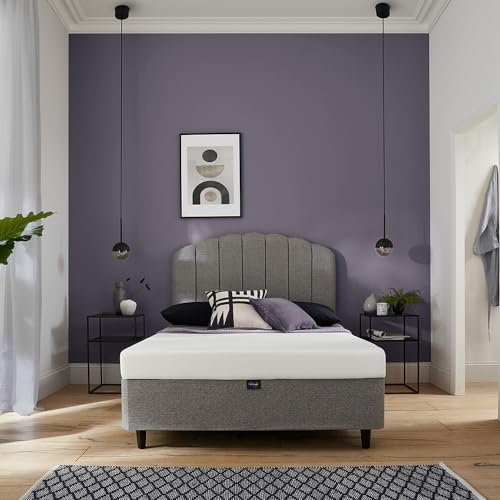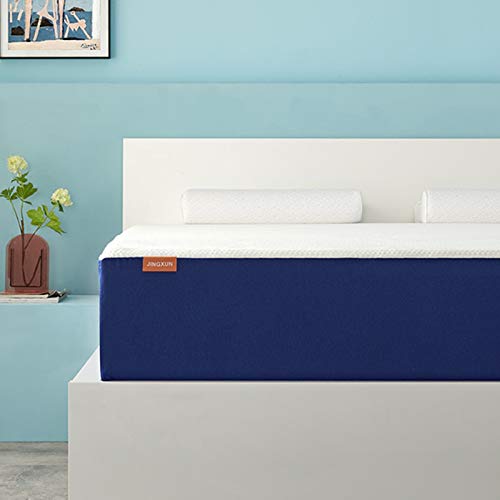Some Wisdom On Bunk Bed For Kids From The Age Of Five
페이지 정보

본문
 Choosing a Bunk Bed For Kids
Choosing a Bunk Bed For KidsA bunk bed can bring siblings closer and provide them with an excitement. It can also accommodate a twin or full mattress on the bottom to accommodate sleepovers.
 However, before you purchase bunk beds for your children, consider these important safety tips. Be sure that the ladder and the stairs are securely attached to the frame and that the rails that guard your children's beds do not have gaps that are large enough to cause strangulation.
However, before you purchase bunk beds for your children, consider these important safety tips. Be sure that the ladder and the stairs are securely attached to the frame and that the rails that guard your children's beds do not have gaps that are large enough to cause strangulation.Safety
Bunk beds are a fantastic space-saving option for children however, they can also be risky if not properly set up and supervised. Always select beds that have full-length guardrails both on the top and bottom bunk. Also, look for a bed that has been inspected by a third-party lab for safety and complies with all CPSC guidelines. If you can, place the bunk bed in a room with no windows or doors that can open to prevent children from leaving the bunks at night.
When you are choosing a bunk bed, think about the weight capacity and age range of your children. Some are made for young children only, whereas others are able to accommodate teens and even adults. Choose if you want an trundle that is placed on the bottom or a twin mattress for two beds. If you plan to use the bed for more than two children, make sure the beds are compatible, and that there is enough space in the room for both beds.
Some children are better suited to the top bunk than others, and it's important to check their readiness to sleep in a bunk bed regularly. Experts generally recommend that children under six years old should not sleep on the top bunk because they may lack the coordination and spatial awareness necessary to safely traverse the ladder and the height of the upper bed.
Also, if your children are often with guests staying over, ensure they understand the bunk bed rules concerning the ladder, and that they are not allowed to engage in rough play or hanging from guardrails. In addition, you should encourage your children to keep things like belts, jewelry, and jump ropes away from the bunk bed, as they can be the risk of strangulation. To ensure your peace of mind, some bunk beds include stairs instead of a ladder and are a great alternative for children who are having difficulty climbing. Night lights can be positioned on bunk beds for kids to help them safely navigate to and from the top bunk at night.
Space-Saving
Bunk beds make the most of the floor space by elevating sleeping areas, which frees space to play or study. While this solution is ideal for kids' bedrooms but it can also be a a dramatic focal point to a living or dining area.
Take into consideration the dimensions of your room as well as the age of your child when deciding on the right bunk beds for your children. Around six or eight, kids begin to demonstrate the maturity and dexterity required for this arrangement. You know your child best and should be able to assess their level of readiness and ensure they're comfortable and confident of the transition.
A lot of bunk beds come with ladders or stairs to allow easy access to the top of the bed. Stairs occupy more floor space than ladders however they are safer for kids as they learn to navigate the high of the beds. Some bunks come with a slide, which gives kids a thrill every when they go to bed.
If you choose a bunk with stairs, go for a design that has ample storage options. This design by Lucy Harris Studio features a drawer underneath the stairs to keep the bunks neat and organized.
Incorporate a theme in the design of your bunk beds to make them feel more unique. For instance, a sports-themed bunk set is a fun option for kids who are into football, baseball or soccer, while a bunk with a fairytale theme is ideal for little princesses. Bunks that have a desk integrated are also a great option for kids who need to complete homework or study at home.
Bunk beds are ideal for siblings who love spending time with each other but respect their independence and privacy. When it is time to host sleepovers for siblings bunk beds enable them to accommodate their friends comfortably without having to use the floor or sofa. Also, only children who share rooms with siblings will appreciate the option of having sleepovers with friends, too.
Convenience
Bunk beds allow siblings to share one room without occupying valuable space. This allows the children to grow, play and study together, while enjoying their own space. It can also make it easier for parents to manage a busy family schedule and keep the home tidy. Bunk beds have many features that make the most of vertical space and are compatible with any style of bedroom.
Selecting a bunk bed to your kids bunk bed bedding isn't just about saving your floor space, it can also be a statement about your parenting style. Loft and bunk beds are available in many sizes and styles that can suit any room. Some models have built-in storage and others provide additional storage space by using a full or twin trundle. These beds can also be reused later on when your children outgrow them, as they can easily convert into two single beds or even a daybed.
Lofts and bunks aren't just a great way to make space, but they can also add a sense excitement and fun to any bedroom. Many kids beds bunk beds enjoy the chance to get a seat on the top bunk, and transform it into a clubhouse, a fort, or even a pirate ship. They can also invite their friends over to sleepovers and create a fun and safe environment in which they can play with their imaginations. play.
Spending more time with their siblings at evening can also aid in forming stronger bonds. Whatever their age being able to keep each other company during the rough times of siblinghood is a great way to strengthen ties and foster emotional development. Loft and bunk bed arrangements are great for older siblings with younger siblings. The older child can mentor the younger child and form bonds with them.
The best bunk bed for kids ultimately depends on the child's ability and safety to climb up and down. While the average kid Bunk beds is ready to take the top bunk at about six years old, it's crucial to make a personal assessment of your child's physical and mental development. Physical development involves coordination, dexterity and ability to climb a ladder. Mental development is contingent on maturity and level.
Style
Bunk beds for children can add an exciting, fun touch to any bedroom. They are great for friends or siblings who share a bed together. They allow children to express their individuality through the color, theme and design they select for their rooms. There are a lot of options to think about when choosing a bunk bed for kids that include:
The most basic design is a bunk bed. It's comprised of two twin-sized beds placed on top of one another. This configuration is perfect for siblings sharing the same space and allows them to easily see each other even when they're on different floors. Many of the basic bunk beds have customization options that make it easy to find a bed that will fit the bedroom of any child.
Some bunk beds have unique features that make them more stylish and functional. Some bunk beds come with drawers under the bed to keep the space under the bunks tidy and neat. This makes it easy to store bedding, clothes and other things. You can also add drapes or curtains to the bunk bed to provide some privacy while sleeping.
Other styles of bunk beds for children include kid loft bunk bed beds that elevate the mattress just a few feet off the floor. This arrangement is ideal for saving space and providing the space to read, relax or work. You can also increase the storage space by adding shelves or a desk.
The final option is a unique, themed bunk bed that fits perfectly with the overall theme of the room. Bunk beds can be constructed with the form of castles, trees, or pirate ships. This will bring fun to any bedroom for children. These themed bunk beds encourage imaginative play and creativity.
When deciding if a bunk bed is the right choice for your child, you need to take into account their age and maturity level. It is generally accepted that children should transition to the top bunk around the age of 6 or 7. However, you will have to determine whether your child is able and capable of sleeping on elevated furniture.
- 이전글Prime 10 Web sites To Look for Daycares Popular Listings 24.11.15
- 다음글We Needed To attract Consideration To Daycares By Category.So Did You. 24.11.15
댓글목록
등록된 댓글이 없습니다.

